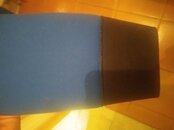MrDiveyMan
New
Hi, I have been searching the internet but I'm unable to find an answer. I did get some answers but it was 50/50.
I have a semi dry wetsuit, so seals on the bottom but without extra cuffs. People are telling these cuffs need to be in contact with skin, and also the opposite. So any advice whether to get some 7mm socks and tuck or untuck, or booties on the outside, inside. I'm really quite confused!
I'll include a photo of the suit legs.
I have a semi dry wetsuit, so seals on the bottom but without extra cuffs. People are telling these cuffs need to be in contact with skin, and also the opposite. So any advice whether to get some 7mm socks and tuck or untuck, or booties on the outside, inside. I'm really quite confused!
I'll include a photo of the suit legs.





